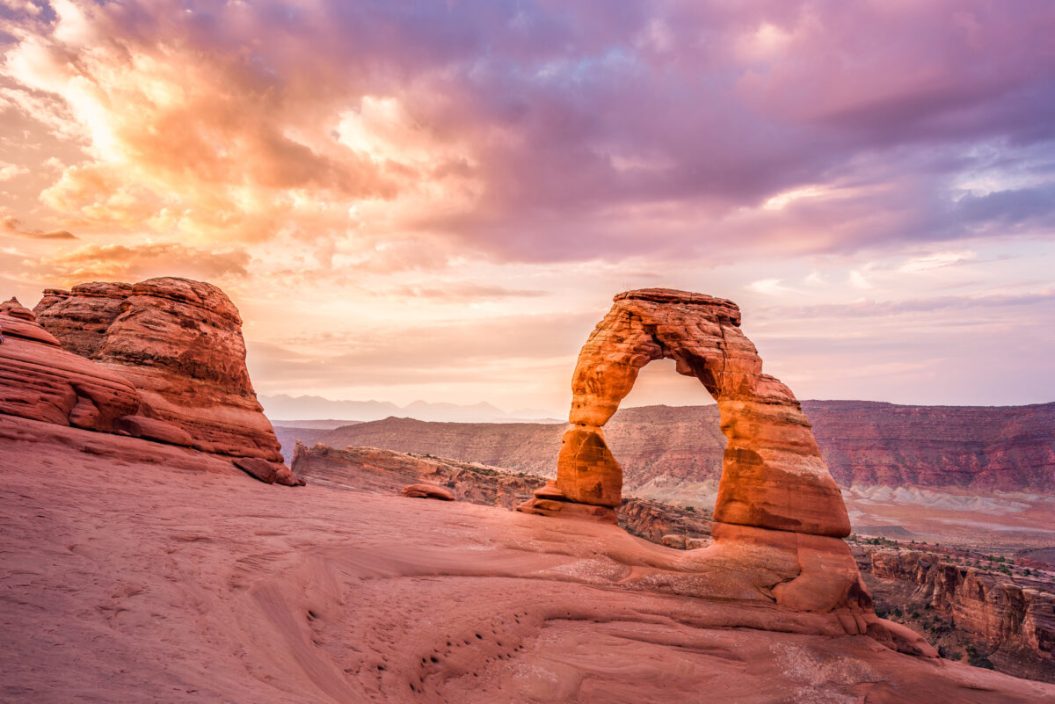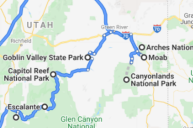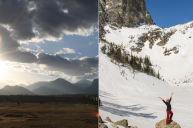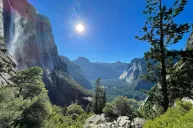Utah is known for its red rock and abundant arches, but Delicate Arch is easily the most iconic—it is, after all, featured on the state license plate. Attracting visitors from across the world, the 52-foot tall freestanding sandstone formation is nestled in Arches National Park.
While you can catch a view of the icon from below by just walking 100 yards from your car, the 3.2-mile Delicate Arch hike offers an amazing close-up of the natural formation. It is a moderate hike that pays off with big memories. Read on for all the details about this memorable hike in the iconic Moab national park.
What Is Delicate Arch?
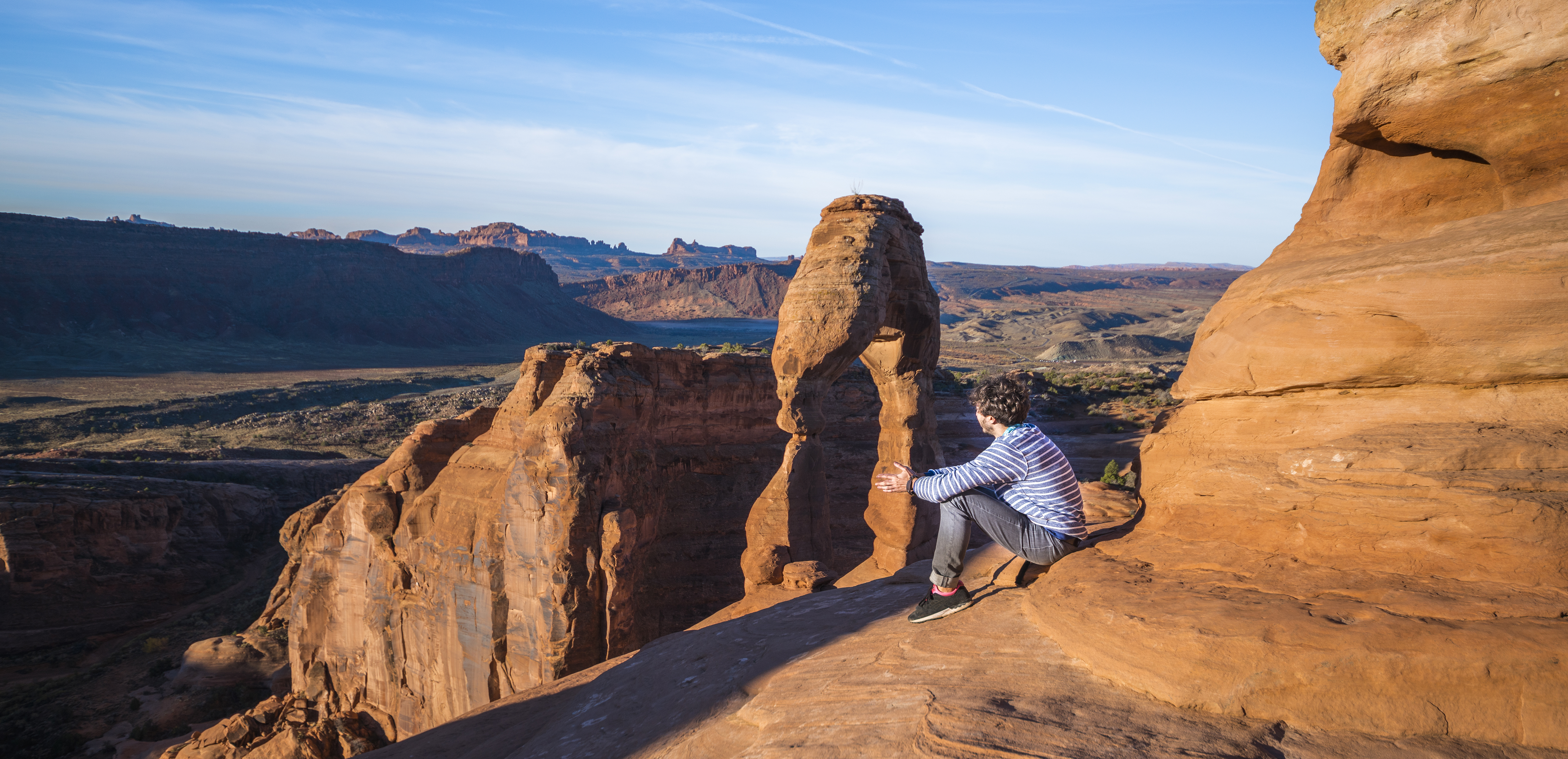
The Arches National Monument, Utah, USA, North America. Unique geological formation.
There are literally thousands of arches within both Moab and Arches National Park—but Delicate Arch captures the imagination like no other. The iconic shape, distinctive red rocks, and its placement alone atop a water- and wind-worn sandstone bowl make for one of the most picturesque vistas in the world.
Delicate Arch wasn't originally park of the park when Arches was first made a National Monument in 1929. Fortunately, it was later included in expansions, and eventually, the area was upgraded to a National Park. Today, Arches one of the most popular tourist destinations in Utah.
That power of water and wind that have shaped both Delicate Arch and the bowl surrounding it are important to remember here: One day, the natural weathering that has formed this landscape, combined with gravity, will cause Delicate Arch (along with most others in Moab) to collapse in on itself. While it'll likely last a few thousand years more, we still recommend hiking in to see it while you still can.
How Hard Is the Delicate Arch Hike?

Delicate Arch, Moab, Utah, Arches National Park, Getty Images
A round-trip hike of the Delicate Arch Trail is about 3 miles, or 1.5 miles each way. However, it usually takes about two to three hours if you're enjoying the awesome rock formations and scenery along the way. It's considered a moderate hike for seasoned hikers and difficult for newbies, as many people are woefully unprepared for it.
The beginning of the hike can be rough: It's basically straight uphill for the initial part, and then lightly uphill for the rest of the trail as you gain more than 500 feet along the way. Much of the hike is on exposed sandstone rock gradually worn smooth from so many people trekking on it. Proper hiking shoes or boots are crucial for this section of the trail as you want traction and support on the slickrock; flip flops and sandals just won't cut it.
It's super important to keep in mind that Arches National Park (and all of Moab) gets very hot during the summer, with temperatures routinely soaring into the triple digits at the height of the day. On this trail, there's very little to no shade, so sunscreen; long-sleeve, sun-protectant clothing; and ample water are musts. While I was fortunate to visit on an overcast day when temperatures were cool, we heard about people getting heatstroke during sunny days on this trail, so take precautions.
With sun and heat stroke in mind, it's also vitally important to make sure you bring along plenty of water for the journey (the NPS recommends carrying at least 2 liters of water on hot days, along with some salty snacks to help replace lost electrolytes on the walk). The closest water station will be at the visitor's center, a good 13 miles from the trailhead. Consider bringing a light pack with a hydration bladder .
Children can make the hike, but it's probably best for older kids. It's a long hike for little legs. Make sure you bring along plenty of drinks and snacks to keep their energy levels up. Take frequent breaks if needed. The last 100 yards or so of the trail is quite spectacular because it goes along a narrow cliff face. It's not really scary, but the fun part is that you cannot see the arch until you come around the edge of a tall rock face, and it is suddenly revealed to you in an open area. It's like nature designed the perfect hike with a spectacular reward for those who make it to the end. Just be careful if you bring a small child along this section. There are no safety railings along the edge, and it's a decent drop to the bottom.
When's the Best Time and Season To Visit Arches?
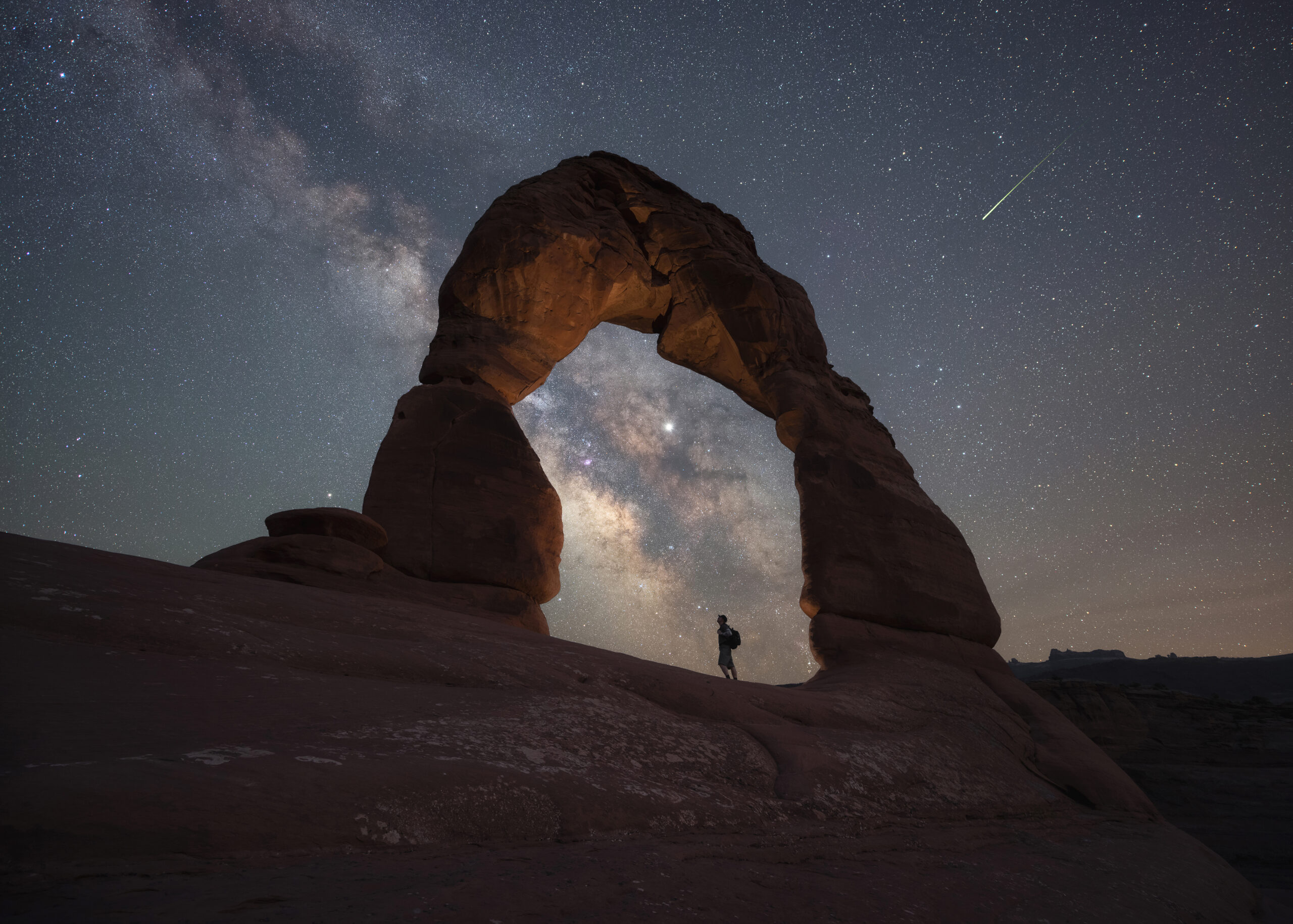
Delicate Arch in Arches National Park Utah via Getty Images
The best time of year to visit Arches National Park is in late spring, early summer, or fall—that's when Moab won't be so hot and there will be less crowds. But the parks it most popular in the summer months of June, July, and August. You have to make a reservation to visit Arches now; tickets can be purchased on the first of month, three months in advanced.
The great thing about Delicate Arch is that the park and trail are usually open 24 hours a day, year-round. But keep in mind Delicate Arch is one of the most popular destinations in the park, so consider going early. Some people even like to make the hike in the darkness while using a headlamp, which has the added benefit of a spectacular night sky and a breath-taking sunrise.
Other Things to See on the Hike
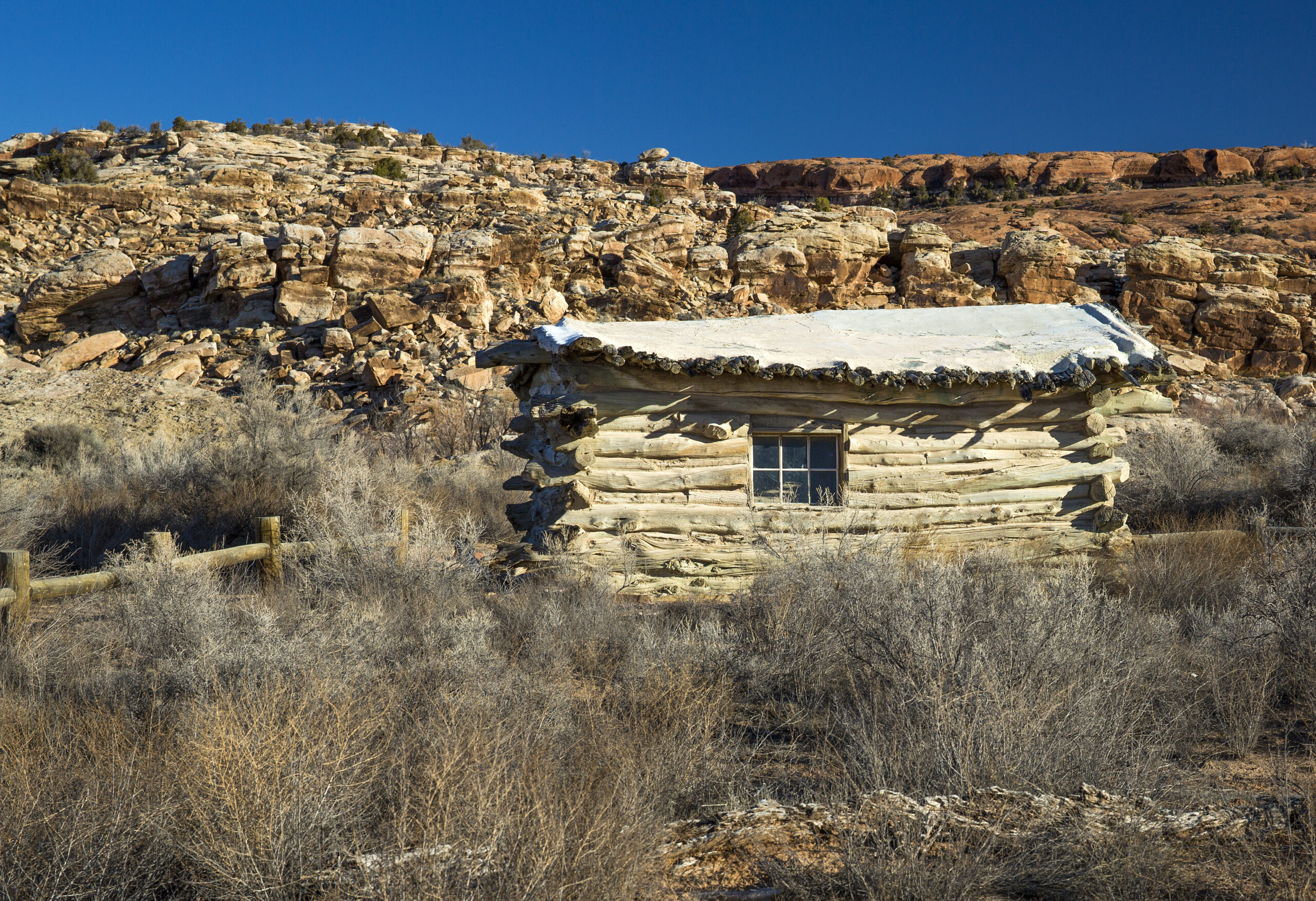
Arches National Park, Utah via Getty Images
While the arch is the obvious end goal, the Delicate Arch hike is full of beautiful vistas to enjoy over most of the walk, as well as historic sites at the beginning. One of the first is near the parking lot in the historic Wolfe Ranch. Although it's not much of a ranch anymore, the one-room historic cabin was built by John Wesley Wolfe, an injured Civil War veteran, and his son Fred back in 1906. It's definitely worth a look on your way—it's rare to see a crude cabin of this age still standing in the American west.
The other main attraction comes from people passing through the area around Delicate Arch long before the Wolfe family built their homestead, as evidenced by petroglyphs the NPS believes were created sometime between 1650 and 1850.
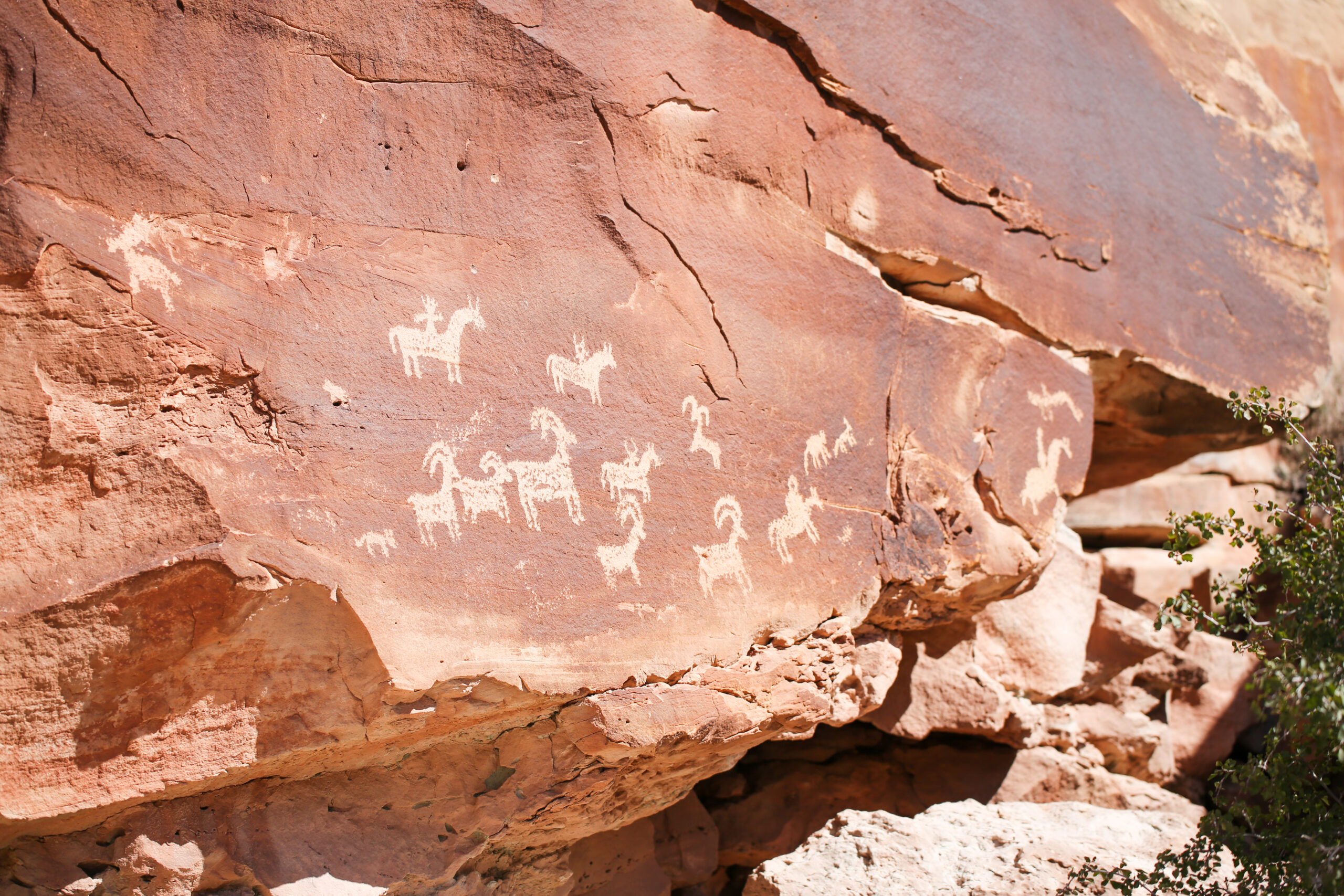
Petroglyphs in Arches National Park via Getty Images
While many indigenous tribes have inhabited or passed through the Arches area, including the Ancestral Puebloans, the Paiute and Ute people were the first to interact with European explorers in the area. The petroglyphs on the Delicate Arch trail are stunningly clear and are believed to have been made by the Ute. The images are also rather intriguing for archeologists because they show humans on horseback, which helps them date the images back to when Spanish explorers first re-introduced the animals to Native Americans in the area. You'll also note what are very clearly bighorn sheep, which can sometimes be sighted in the park if you're lucky.
In addition to these two historic sights, you'll walk right past "Twisted Doughnut Arch" on your way to visit Delicate Arch. There's a great photo opportunity to frame the more famous arch within the border of the smaller one.
Is the Hike to Delicate Arch Worth It?
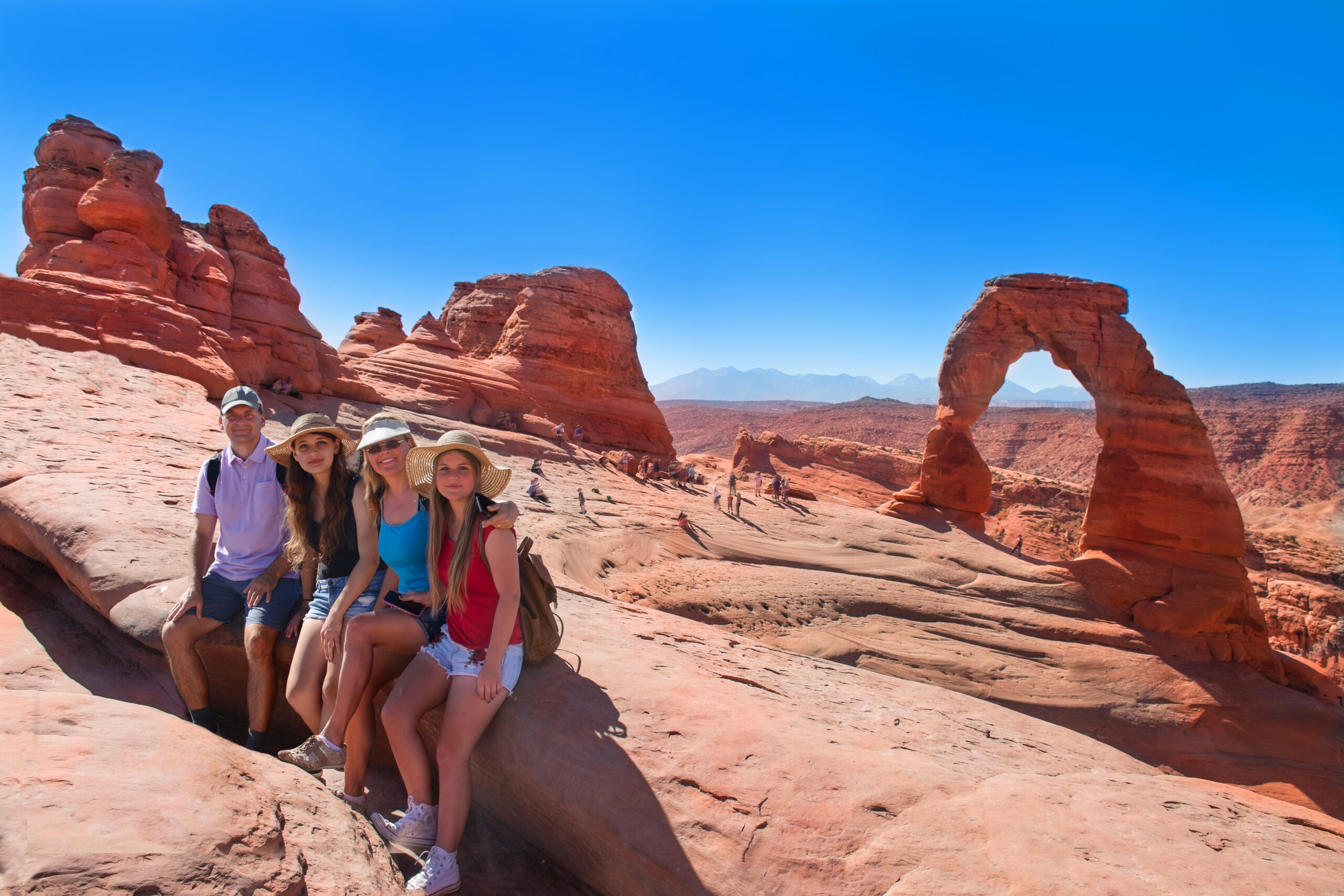
Smiling happy family on vacation hiking trip. People relaxing on top of mountain next to Delicate Arch enjoying time together. Arches National Park, Utah, USA
The Delicate Arch hike may be hard, but it's without a doubt worth it. We definitely recommend being strategic and paying attention to the National Park Service's website, which gives regular updates on the times the parking lots are full; this will help you avoid some of the crowds, giving you the best experience possible.
But whenever you're able to go, this hike is one the best opportunities to see the iconic landscape of Moab.
